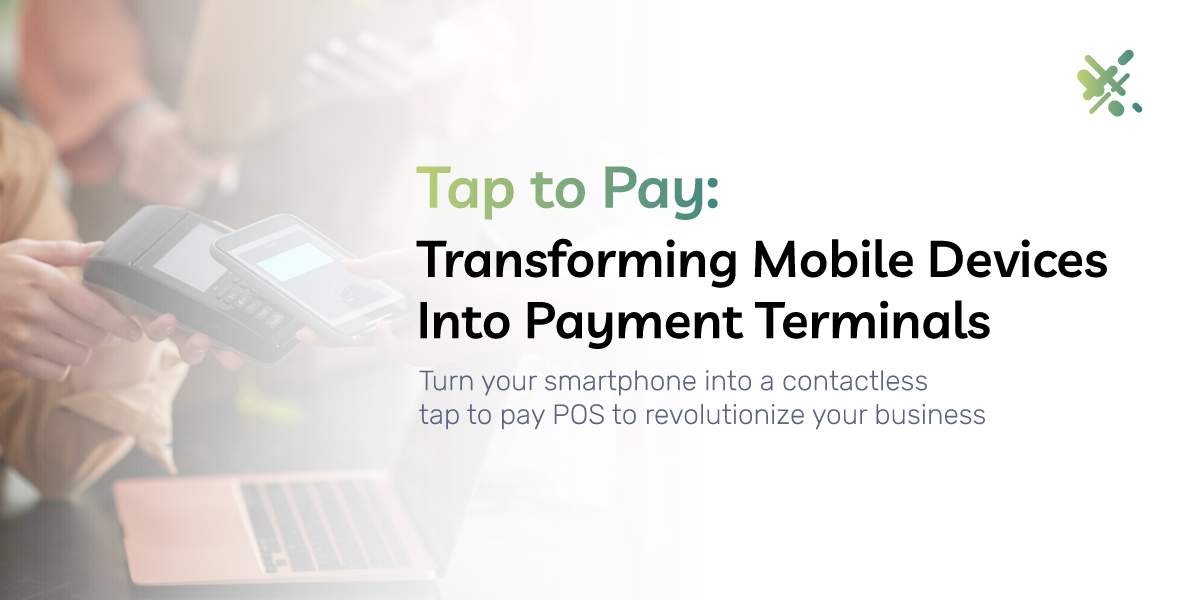Business owners are sometimes reluctant to embrace new technology. There is a learning curve that can require significant effort to master, in addition to the expense of rolling out new tech. But the benefits tend to far outweigh the costs of keeping your business competitive.
But sometimes, new tech is easy and inexpensive to implement. And right now, one of the most exciting developments in tap-and-pay technology is underway. It’s a payment technology that uses a device most Americans already carry in their pocket: their smartphone.
A History of Contactless Payments
As you know, businesses did not always accept contactless payments. Once upon a time, credit and debit card payments required the cardholder to swipe their card through the magstripe reader of a credit card terminal.
The magnetic stripe contained information about the card, some of which the cardholder would verify on the pin pad. Magstripes never really took off in Europe, but they were the go-to way to pay in America for decades.
Over the last decade-and-a-half, EMV chips have become the preferred way to pay in the United States. This involves the customer inserting the end of the card with an embedded chip into the payment terminal.
This method is more secure, partly because it gables and randomizes the financial data on the card into a one-time code. This code can only be deducted by the fintech parties who have the key. However, it still requires the customer to contact the POS terminal: they must insert the card and input a PIN if it’s a debit transaction.
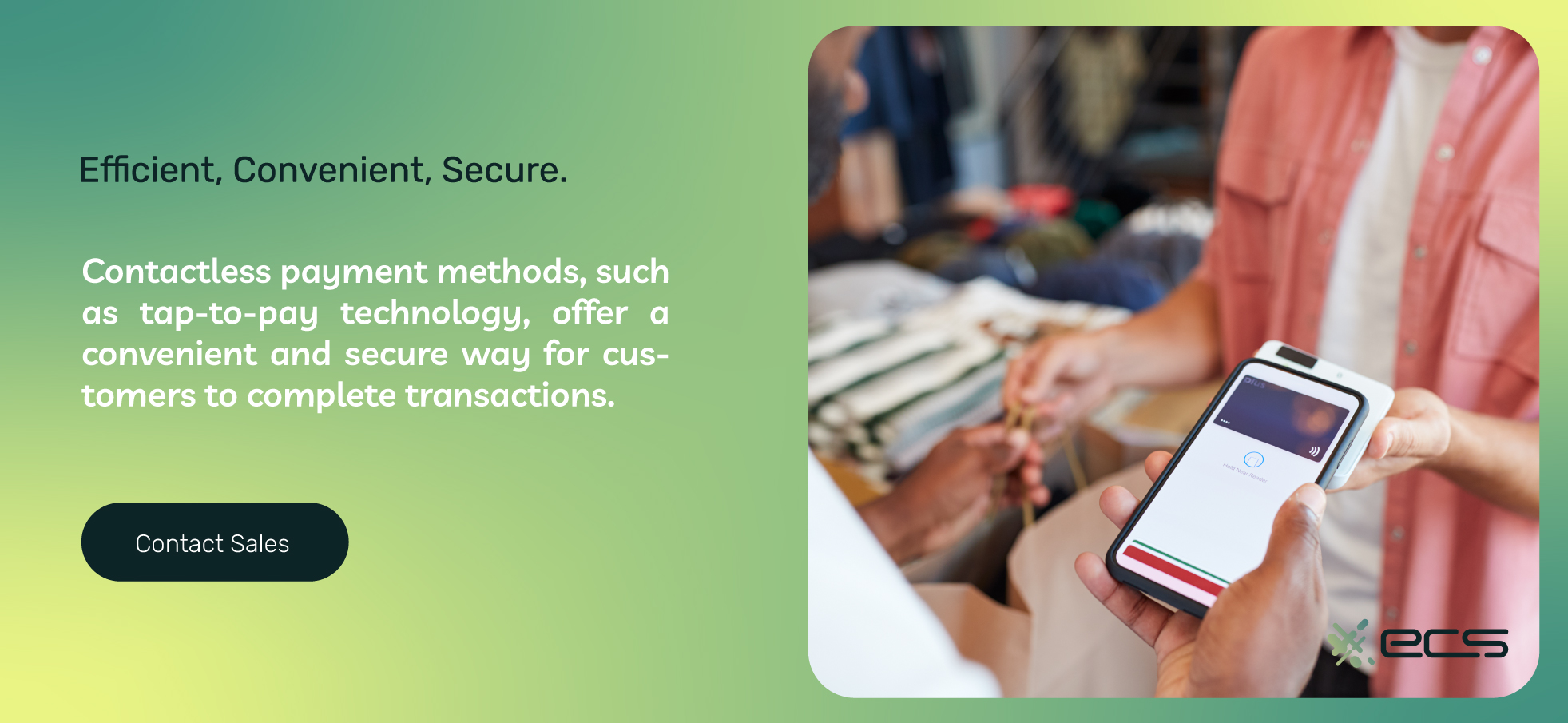
How Does Tap To Pay Work?
During the COVID-19 pandemic, a new payment method began to gather popularity, and that was tap technology. This method is a truly contactless payment process using radio frequency identification or RFID technology.
In this type of contactless transaction, there is a small antenna inside the card. This minuscule copper wire wraps around three sides of the card and coils around the EMV chip. The antenna is activated when the card is brought close to a payment terminal.
The antenna and the POS then use radio waves to transfer payment information. RFID technology uses short-range waves, so there is no chance of anybody intercepting them in the 1-3 inches distance between the contactless card and the POS.
Tap to Pay With Mobile and Digital Wallets
About a decade ago, mobile device makers began incorporating this technology into consumer mobile phones. This tap-to-pay or NFC (near-field communication) technology uses an idea similar to that of RFID cards: radio waves.
Keeping technical jargon to a minimum, there is an NFC chip inside the mobile device that can get activated, like the RFID antenna buried inside a card. However, there is an additional component to this payment system, which is the mobile wallet.
A mobile wallet is a payment app that allows consumers to upload and store cards “inside” their phone. When they want to pay, they can open the mobile wallet and hold the phone near a POS with a contactless symbol.
Apple Pay, Google Pay, and Samsung Pay are just a few mobile wallet applications consumers use to make contactless credit card payments…with no credit card (and just their mobile device).
How To Use Tap To Pay For Your Business
As of 2024, there is a decent chance your business has already integrated contactless and mobile payments into your brick-and-mortar payment options. Magstripes from Visa and Mastercard will disappear by 2030, and many payment processors have already shifted their hardware towards EMV chip insertions and contactless payments.
But what if a mobile phone could not just make contactless payments? What if it could also receive them as well? To clarify, we are not talking about an online payment gateway that customers access on their phones through a web browser.
We are talking about allowing customers to tap their contactless cards or even their mobile devices over your mobile device. Your mobile device will be converted into a pocket-sized POS. You will be able to take contactless payments on your phone.
Many payment processors, perhaps most famously Stripe and Square, have already pioneered the idea of mobile terminals that merchants can plug into a phone. While Stripe and Square are two of the more common vendors, dozens, if not hundreds, of payment processors offer the same hardware (and probably better rates).
The idea of turning the phone itself into a mobile payment terminal takes this a step beyond. There is no additional piece of hardware needed and no swiping chip insertion, or small devices to lose. There is just your mobile phone converted into a contactless POS.
Consumer Perception Can Make or Break Your Business
Imagine what kind of possibilities this could open up for your business. First off, let’s start with consumer perception. You’d be surprised by how many seemingly insignificant details can snowball into a perception that makes or breaks your business reputation.
Cleanliness and ease of checkout are two such considerations. Customers find cleanliness and organization very important when it comes to in-person shopping. If they perceive a store or restaurant as dirty, not only will they avoid coming back—they’ll tell their friends.
Then, there is the payment experience. Customers hate long lines and burdensome checkout transactions. Long lines can drive potential business away by creating the perception that your business is understaffed and incapable of meeting consumer demands.
Contactless payments deal with both of these concerns. Firstly, contactless payments mean (drumroll please) no contact. Consumers associate this with less chance of getting sick and catching something like COVID-19 (a pandemic concern that has lingered on).
Contactless payments also greatly speed up transitions. While an EMV chip insertion can take 10 seconds, contactless payments take 1-3 seconds to complete. This can greatly reduce friction at the checkout stand (e.g., fumbling for a wallet), speed up the transactions, and reduce the line length.
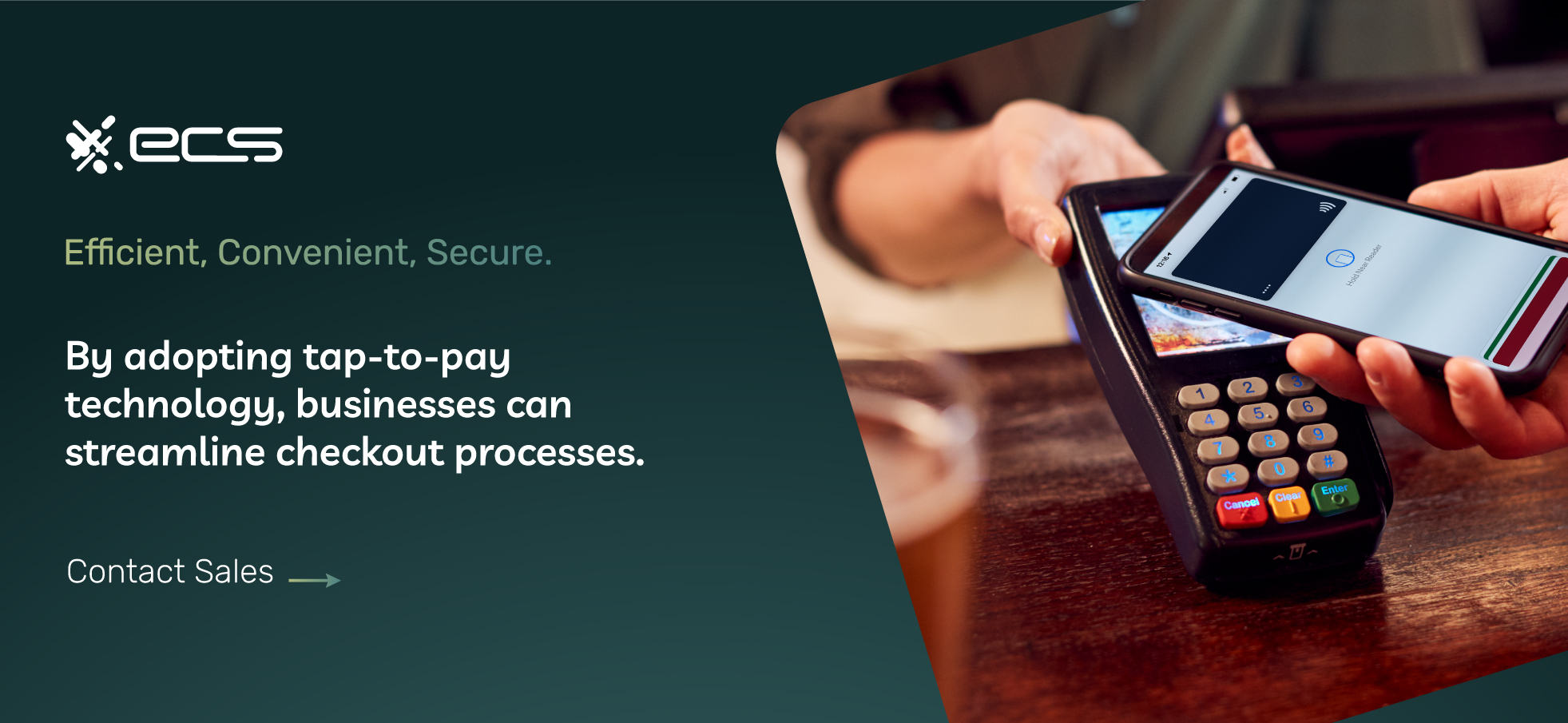
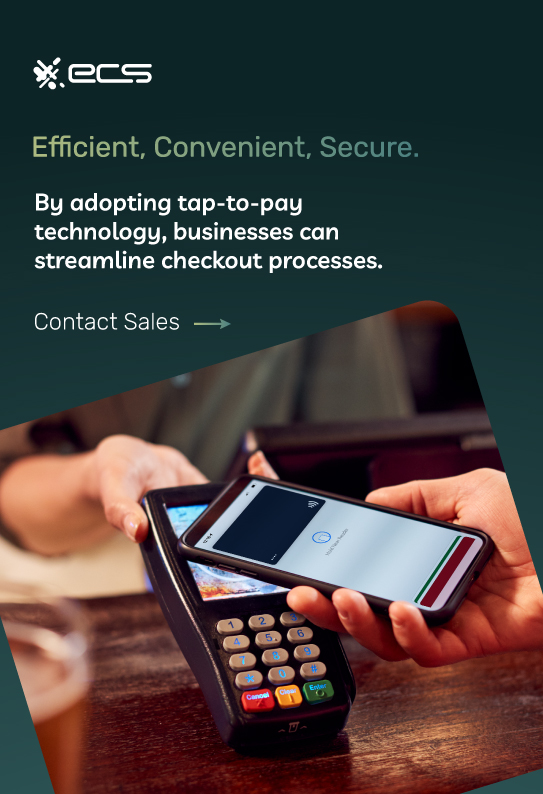
Small Businesses That Would Benefit from Tap To Pay Mobile Device Terminals
All of the points mentioned above are about contactless payments in general. What about the idea of turning a mobile device into a contactless POS? This adds more flexibility, speed, and user experience to the contactless credit card paradigm.
Restaurants
Let’s look at a restaurant as an example. Once upon a time, servers brought paper menus to customers to make a selection. After the meal, customers presented the server with a card, which the server took out of their sight for 5-10 minutes.
That’s a lot of touching, potentially germy items (e.g., the menu) and some anxiety-inducing disconnection from your credit card. No more of that with a contactless mobile phone POS. Servers could use a mobile device (their own phone, even) to place orders through an app, which would send the orders right to the kitchen.
When it’s time to pay, the server can bring their mobile device again. The customer can take out their credit card or their own mobile device and hold it against the server’s to complete a contactless tap to Pay payment.
Contractors and Home Repair
Growth is the natural trajectory for most successful businesses. What happens when your home repair or contracting business starts taking more jobs than what you can handle in person? It’s time to hire subcontractors.
But how are these subcontractors going to get paid? Are you going to rely on them to collect cash and checks? There are several problems with this. For starters, a dishonest contractor could charge more than you ask for and pocket the difference. There are also issues with cash getting lost, checks bouncing, and needing to cash the check.
What if there was some sort of application that would allow all of your contractors to turn their phones into a payment terminal? This would eliminate issues of dishonesty and accident. Contractors could collect card or mobile wallet payments at the job site after they’ve completed their work.
Using their mobile devices as itinerant POS terminals can also save you a significant amount of back-end work. Imagine collecting cash and check payments and having to input all that into a spreadsheet. Or worse, juggling invoices and sending follow-ups.
A mobile app would also integrate payment collection with your accounting software. The hours spent manually transferring data (inputting numbers, reconciling invoices) could be put to better use, like growing your business, spending time with your family, or golfing.
Charity-Based Organizations
The above example with a fleet-based workforce points out that if you outsource your work to a mobile team, you need mobile payment solutions. The mobile card readers previously manufactured by Square or Stripe seemed to solve this problem. But turning the phone itself into a mobile POS eliminates even the need for these extra plugins.
Charity-based nonprofits face a similar plight to fleets of home maintenance professionals. That is, there are several employees on the go. These employees collect donations, whether going door-to-door or setting up a table somewhere.
Some of the same issues can arise. Unscrupulous employees can skim some cash off the top. They can lose the cash. Crime may be less likely (one would hope), but it can still happen. And there is a separate issue, which is that most consumers don’t carry that much cash.
This isn’t so much of a problem for service-based businesses. Consumers can pay with a card, give a check, or take cash out of a nearby ATM ahead of time. But what if they are approached on the fly to donate money to a certain cause?
Studies have shown that consumers spend less when using cash and more when using a card. This might be related to charitable giving on the fly as well. Consumers do not readily carry large amounts of cash on their person, if at all. They may be inclined to give larger amounts when prompted to give with a card instead of cash.
But wait, there’s more. You can guide donors who give to a cause to enroll in recurring donations. Tapping their card or mobile device over the phone of a collecting representative can be the first step in enrolling in periodic monthly giving (obviously with their express permission).
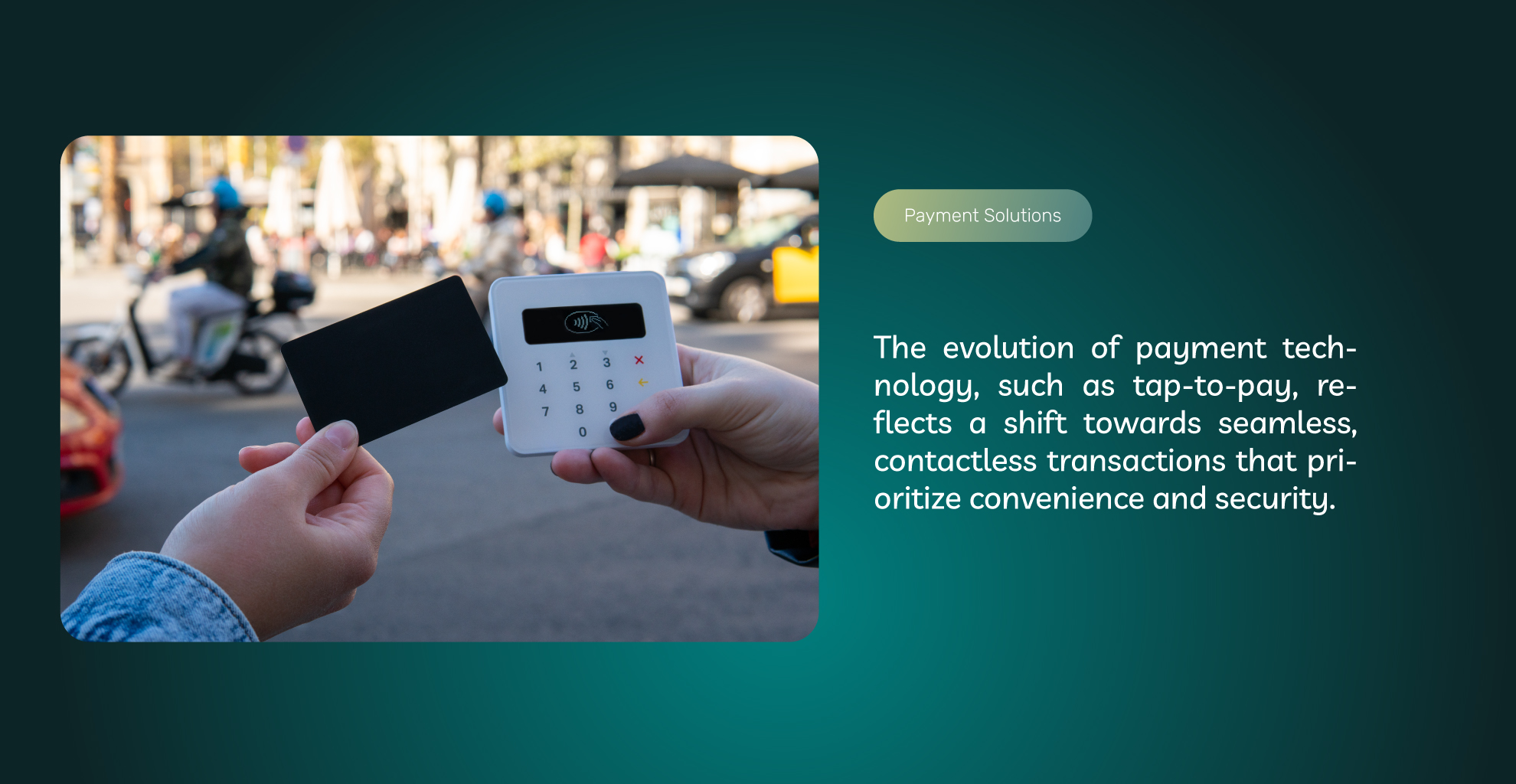
Fairs, Festivals, and Long Lines
Businesses going mobile can also benefit from purely mobile payment solutions (e.g., turning their phone into a contactless POS). One issue that popup satellite locations experience is long lines, especially at busy festivals.
Businesses taking cash only will be stuck with long lines, as they can only process one transaction at a time at the point of sale. But what if a business could have employees walk along the line with a phone, taking payments as they go and issuing receipts in return? This would greatly speed up the rate of transactions and reduce the line.
Banks are known for attempting to use this strategy in branch locations. Bankers will walk along the line, asking if they can handle any bank account deposits. This thins out the line and keeps it moving. Why not use a similar strategy if your business has a popup location at a fair or festival, where lines can start becoming long?
Your Phone as a POS, Wrap-Up
Turning a phone into a contactless POS is one of the most exciting trends in payment technology. It’s the culmination of a long history of payment technology moving toward cashless, contactless interactions. And it can provide your business with greater flexibility and improved customer experience. To see if this solution will work for you, contact us or fill out the form below.
Frequently Asked Questions About Transforming Mobile Devices Into Payment Terminals
Converting your smartphone into a payment terminal offers enhanced customer experience, quicker transactions, reduced checkout times, improved flexibility, streamlined processes, and creates a perception of a modern and efficient business that positively impacts customer satisfaction and retention. To learn how to implement these solutions into your business, contact ECS Payments
The implementation of this technology is often easy and cost-effective. Turning your phone into a payment terminal is user-friendly and efficient. It eliminates the need for additional hardware and many payment processors offer mobile terminal solutions with competitive rates. To learn how to implement these solutions into your business, contact ECS Payments
Contactless payments, facilitated by tapping mobile devices together, are faster and more convenient than traditional EMV chip card methods. With transaction times reduced to 1-3 seconds, businesses can minimize wait times to create a smoother checkout experience for customers and add an extra layer of hygiene to the checkout process.
Various types of businesses can benefit from mobile device payment terminals. For example, restaurants can streamline orders and payments, reducing physical contact with menus and credit cards. Contractors, home repair businesses, and charities can use it to facilitate on-site payments, improving efficiency and eliminating the need for cash or checks. Additionally, businesses with temporary locations, such as fairs or festivals, can optimize transactions and reduce long lines by using mobile payment solutions.
